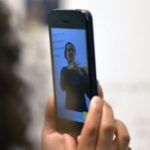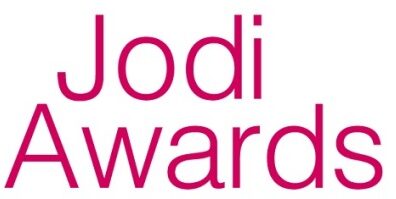Sign language is the preferred language for many deaf people, and the Signly app at the Roald Dahl Museum and Story Centre, delivers smart signed content directly to the user’s device. Open the app and point at a Signly SIgnpost to play the relevant video. Signed content appears as if the visitor had brought their own interpreter along in their pocket.
For example, aim Signly at the Signly label positioned near Roald Dahl’s writing chair to get signed content about the exacting daily routine he followed to create his famous tales.
Objectives of the project
 These were to provide equal access to the attraction, exhibits and experience for deaf sign language users and their families and groups, as currently enjoyed by hearing people
These were to provide equal access to the attraction, exhibits and experience for deaf sign language users and their families and groups, as currently enjoyed by hearing people
We sought to develop a bespoke software app that would engage British Sign Language (BSL) visitors, helping to bring information to life. The aim was to provide equal access to information and activities, and the equivalent choice and independence that other visitors enjoy. Signly inserts a smart layer of signed (or spoken/filmed) digital information onto the screen of a deaf visitor’s own mobile device to animate, translate and invigorate their experience by revealing information about each exhibit in a museum for instance. This would offer a pilot and showcase for a unique and innovative use of technology to improve accessibility.
We wanted to enable British Sign Language users to enjoy the venue without having to make their ‘special needs’ known.
Involvement of disabled users
Disabled users were involved in the following stages of the project:
- Planning: Deafax, a charity and founding partner, is staffed by deaf and hearing colleagues. It also shared the concept and prototypes with the deaf community to validate whether the idea was a good one.
- Design: Five deaf users attended an early testing session at RDM&SC to view five Signposts at prototype stage
- Implementation: Upon full build and deployment to the app store, 15 deaf users attended the launch day at RDM. This included individuals, families and school groups. Feedback is attached.
- Testing: In the early days we had to communicate with as many different users as possible to ensure the content worked on a variety of devices. The app has a broader user base now and is subject to continuous feedback. Much of this has been rolled into Signly 2.0 due to be released at the museum in February 2017.
- Evaluation: Representatives from Deaf Opinions visited the museum to test and review Signly. They have since posted this on social media (https://www.facebook.com/100004004037779/videos/1062805297196261/) which has received several hundred ‘likes’ and more than 200 very positive written comments.
Innovative inclusive features
Signly is a world-first. No product delivers similar levels of independence and empowerment.
- The UI is designed with accessibility in mind and has simple, intuitive navigation. Using the app any person can visit the museum without having to pre-book affording them the same inclusion as anyone else.).
- You can view a video about Signly online https://vimeo.com/142613013
- There is a common misunderstanding that simply by making information available in written form, will automatically mean that it is accessible for deaf people. It will not – or, at least, not always and not for all deaf people.
- For many of these visitors, English should be regarded as a second language and without access to the information in their preferred language – sign language (usually British Sign Language or BSL) – they will not be able to enjoy the attractions to the same extent as hearing visitors.
- Visitors should not have to wait for special days when an interpreter can be provided, and nor should the attraction have to invest heavily in additional equipment or personnel. Signly provides the equivalent of a sign language interpreter in the visitors’ pockets (or an audio guide for the deaf), so that they can access material when they decide; and their family or class/group can all attend at the same time and enjoy the same experience. The Signly service works on Android and Apple smartphones and tablets, and the app is free to download.
- The Signly videos can be triggered by special codes, as used at the Roald Dahl Museum, or by an image (e.g. work of art, poster, page of a book etc.), or an actual 3D object or artefact.
Accessibility features
Our app conforms to both Google Play and Apple usability guidelines and targets as many devices as possible. The video content was recorded with its young audience in mind, giving them time to understand the content. Our website features embedded BSL videos to provide an alternative to the text for its target audience.
The app was extensively tested by the development team and our partners at Deafax to ensure video delivery was slick and seamless without buffering.
The content was tested with the user group and we found the style of signing needed to be adapted for our younger audience. We selected a signer with relevant experience; a deaf teacher from the Deafax team who is also a teacher of young children.

